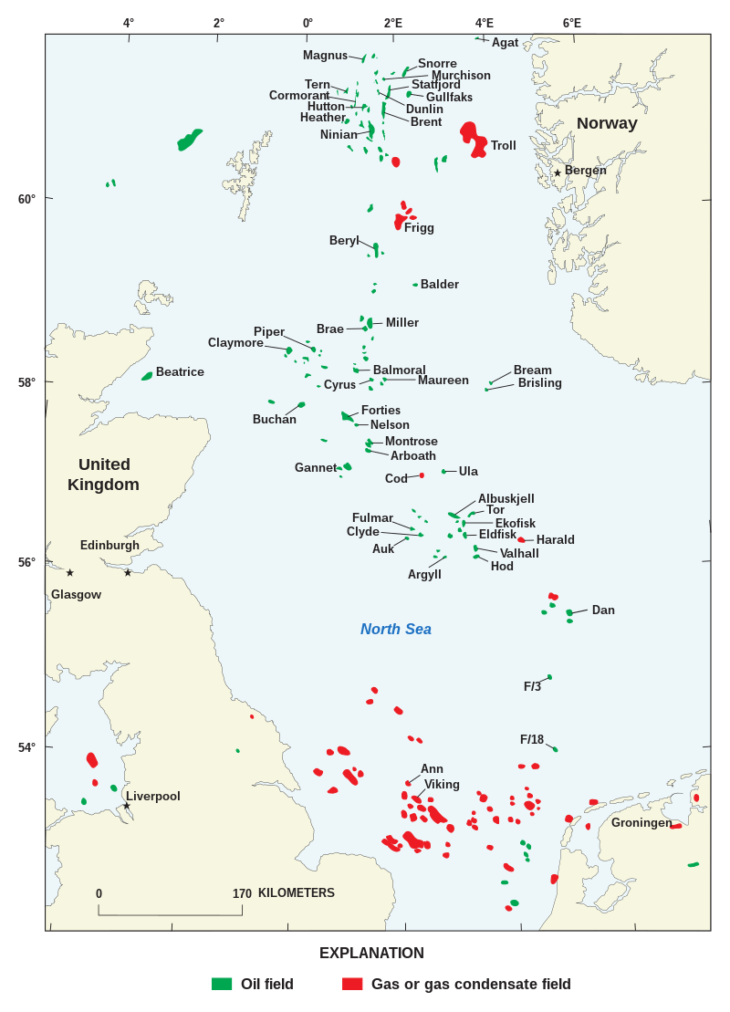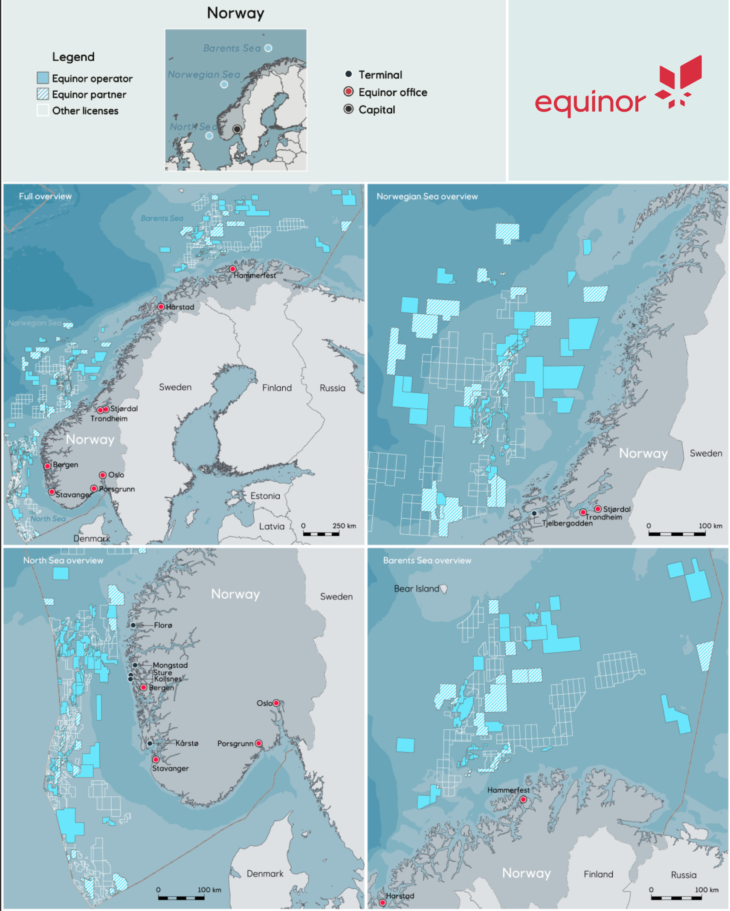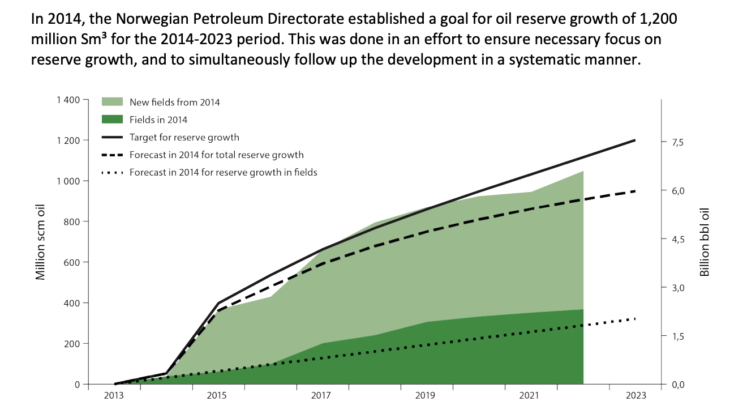The OGM Interactive Edition - Summer 2023 - Read Now!
View Past IssuesThe Government of Newfoundland and Labrador in Canada is reviewing its current offshore oil and gas assets, specifically focusing on its equity positions in the Hebron, Hibernia Southern Extension, and White Rose Extension projects. The goal is to determine their potential and structure the province’s asset portfolio for sound fiscal stewardship, high-quality services, and public-sector benefits.
Given the offshore equivalency of Norway’s energy sector and Newfoundland’s energy potential, one cannot consider assets and opportunities without careful examination of Norway’s model of success. After all, the true measure of leadership is the ability to emulate those already doing it.
The key to Norway’s success was its nationalization of resources through the establishment of a state-owned company, strong regulatory frameworks, and long-term thinking. The Norwegian Petroleum Directorate ensured best practices, profitability, and efficient development of resources while reducing environmental impact. Investment in a sovereign wealth fund provided long-term financial stability and income for future generations. To replicate Norway’s model, careful planning and implementation are required.
The most common justification for Newfoundland not achieving success at the rate of Norway is that Newfoundland and Labrador is a province, while Norway is a country. Underneath that statement reveals the true issue. Canada and its provinces are not aligned at the level that is necessary to become one of the greatest countries on earth. Let’s start there…
How can Newfoundland replicate Norway’s success? That is the “$billion” question. This article serves to provide a framework of operations for Norway’s energy development and reveals how the right strategy, equity in projects, and infrastructure led to profits and ultimately the world’s most successful investment fund, allowing Norway to be one of the richest countries, per capita, on the planet.
Norway nationalized its oil and gas resources and created a state-owned company, Statoil (formerly Statoil and StatoilHydro), to manage them. Headquartered in Stavanger, Norway Equinor ensures Norway’s petroleum mandates are executed with precision and as a result, today Equinor is operating in 36 countries with additional investments in renewable energy.
The first step in Newfoundland reaching its full potential is to ensure it’s aligned with Canada and has the necessary organizations and funds to be primary equity stakeholders in its own energy projects, thereby ensuring Newfoundland and Labrador as well as Canada, are the primary beneficiaries at every step of the energy industries development. Without this, in place, full benefits are not able to transfer. Once again, think of this as the difference between being employed within a company and owning the company. The owner of the company dictates the future and outcomes of the operation. Working at the company has marginal influence, benefits, and results.
Newfoundland and Labrador has traditionally fore-fitted long-term success for the benefit of short-term jobs. Here is the first hurdle to overcome. This is a mindset and leadership issue, not an industry issue.

The Norwegian government established a strong regulatory framework to ensure that oil and gas companies operating in the country met high standards for safety, environmental protection, and labor rights. This helped to build trust with the public and ensured that the resources were developed responsibly. The Norwegian Petroleum Directorate was formed to ensure best practices and profitability.
While Newfoundland and Labrador’s regulatory framework is governed by CNLOPB, the province will often fail to adhere to the Atlantic Accord’s full framework, simply because the oil projects offshore Newfoundland are not government-owned at a majority shareholder level. Therefore, no matter how good the government and the Atlantic Accord are, there is no authentic way to ensure the majority of work is done in the province.
Exploration and production offshore Newfoundland spur $billions of infrastructure contracts and work. This important work offers opportunities and builds infrastructure however the work often slips through the cracks with justifications like, “Newfoundland doesn’t have the facilities to deliver on such projects.” That justification is an easy reason to allow work to go outside the province, however, it is a direct result of not being primary stakeholders in the provinces’ energy projects.
If you owned a company and you could get the work done locally would you?
If you owned a company would you invest in the infrastructure of your business, so that you could utilize that solution over and over again as you scale your company?
As an employee, how invested are you in the profitability of the company, company sustainability, and long-term benefits of the company?
Get the big picture?
As primary shareholders, the ability to influence work decisions and where it occurs is mitigated and therefore results are not diluted. Not being the primary shareholders of oil projects offshore Newfoundland leaves the province with a limited scope of influence and outcomes.
Ultimately, justifications for work being done outside the province are a recipe for playing small and not maximizing profits and potential. It’s short-term thinking over long-term success and investment.
Norway took a long-term approach to develop its energy resources and established the Government Pension Fund Global (GPFG) to invest profits from the resources for future generations. This ensured that the country did not squander its wealth in the short term and had a sustainable financial strategy.

The Norwegian Petroleum Directorate (NPD) is responsible for managing Norway’s petroleum resources on behalf of the state, with a focus on ensuring that exploration, development, and production of oil and gas resources are conducted efficiently and in an environmentally responsible manner.
Here are some of the key steps that the NPD took to ensure that Norway’s oil and gas industry was profitable:
1965: The NPD is established as a government agency to manage Norway’s petroleum resources.
1972: The NPD is given regulatory authority over Norway’s offshore oil and gas industry.
1970s: The NPD begins promoting exploration of Norway’s offshore oil and gas reserves by providing geological and geophysical data to oil companies and offering financial incentives for exploration.
1980s: The NPD continues to promote the exploration and development of Norway’s offshore oil and gas resources, leading to the discovery of several large fields in the North Sea.
1990s: The NPD shifts its focus to maximizing recovery from existing oil and gas fields, implementing policies to encourage operators to invest in new technology and techniques to increase recovery rates.
2000s: The NPD implements regulations to reduce the environmental impact of offshore oil and gas production, including regulations related to drilling waste and emissions.
Overall, the NPD’s approach to ensuring profitability in Norway’s oil and gas industry has been based on being a primary shareholder in the majority of oil and gas projects, promoting efficient exploration and development of resources, maximizing recovery rates from existing fields, and implementing policies to reduce the environmental impact of production.
The NPD has also worked closely with industry stakeholders to establish a framework for collaborative decision-making on issues related to resource management and development. Together, these efforts have helped make Norway’s oil and gas industry one of the most profitable in the world.

Replicating Norway’s model of development for energy resources is a complex process that requires careful planning and implementation. While every country is unique, there are several key steps that can be taken to replicate Norway’s success in this area:
Establish a clear energy policy:
A clear energy policy is essential to guide investment decisions and ensure a consistent approach to resource management. The policy should outline long-term goals for energy security, sustainability, and economic development.
Conduct a comprehensive resource assessment:
A comprehensive assessment of the country’s energy resources is essential to identify areas with high potential for oil, gas, and renewable energy development. This assessment should take into account geological, geophysical, and environmental factors.
Develop a regulatory framework:
A regulatory framework that promotes responsible and sustainable resource development is essential to protect the environment and ensure public safety. This framework should include regulations for the exploration, production, and decommissioning of energy infrastructure.
Establish a sovereign wealth fund:
A sovereign wealth fund can help to manage the country’s energy revenues and ensure long-term financial stability. This fund should be managed transparently and independently to avoid corruption.
Build strong partnerships between industry and government:
Collaborative partnerships between industry and government can help to ensure that investment decisions are made in a way that promotes long-term sustainability and balances the interests of all stakeholders.
Promote environmental protection:
Environmental protection should be a top priority in energy development, and regulations should be in place to minimize the impact of oil spills, reduce greenhouse gas emissions, and promote biodiversity.
Invest in renewable energy:
Investing in renewable energy sources like wind, solar, and hydropower can help to diversify the energy mix and reduce reliance on fossil fuels.
Promote innovation and technology development:
Encouraging innovation and developing new technologies can help to increase the efficiency of resource extraction and maximize the value of energy resources.
Develop a skilled workforce:
Developing a skilled workforce is essential to ensure that the country has the human capital necessary to manage and develop its energy resources.
Encourage research and development:
Encouraging research and development in areas like carbon capture and storage and advanced drilling techniques can help to increase the efficiency and sustainability of energy development.
Foster international cooperation:
Building strong relationships with other countries can help to promote knowledge sharing and collaboration in energy development.
Ensure transparency and accountability:
Transparency and accountability in energy development are essential to maintain public trust and avoid corruption. This can be achieved through regular reporting and independent audits.
Consider the social and economic impacts of energy development:
Energy development can have significant social and economic impacts, and these should be carefully considered in investment decisions. This includes impacts on local communities, indigenous peoples, and the broader economy.
Develop infrastructure:
Developing the necessary infrastructure, such as pipelines, ports, and storage facilities, is essential to support energy development and ensure the efficient transport of resources.
Encourage investment in the energy sector:
Encouraging investment in the energy sector can help to promote growth and development, but it should be done in a way that is consistent with the country’s energy policy and regulatory framework.
Promote energy efficiency and conservation:
Promoting energy efficiency and conservation can help to reduce energy consumption and mitigate the need for new energy development.
Ensure stakeholder engagement:
Engaging with stakeholders, including local communities, indigenous peoples, and environmental groups, is essential to ensure that their interests are taken into account in energy development decisions.
Develop a communication strategy:
Developing a communication strategy to inform the public about energy development activities and engage them in the decision-making process can help to build support and maintain public trust.
Monitor and evaluate progress:
Regular monitoring and evaluation of energy development activities are essential to ensure that they are consistent with the country’s energy policy and regulatory framework and that they are achieving the desired social, economic, and environmental outcomes.
Continuously improve and adapt:
Energy development is an ongoing process, and it is important to continuously evaluate and improve the approach over time. This may involve adapting to changing market conditions, technological advances, or environmental factors.
Overall, replicating Norway’s model of development for energy resources requires a comprehensive and collaborative approach that balances economic, social, and environmental factors. It is important to establish a clear energy policy, develop a strong regulatory framework, invest in renewable energy, promote innovation and technology development, and engage with stakeholders throughout the process.
While Newfoundland and Labrador have adopted many of these strategies for success, the missing piece is still equity and ownership. Every single one of these development initiatives changes, based on being primary shareholders of the resource.
Being primary project shareholders and following this development model, countries like Canada can learn from Norway’s success and create a sustainable and profitable energy sector to secure their own future.
The NPD’s resource classification system defines oil and gas resources as reserves once the operator
has submitted a plan for development and operation (PDO) or decided to implement a measure to
optimize recovery that does not require a PDO. Discoveries are classified as fields once an approved
development plan is available. 93 fields were in production at the year-end of 2022. In contrast, Offshore Newfoundland has

Norway’s trillion-dollar fund, officially known as the Government Pension Fund Global (GPFG), was built primarily from the country’s oil and gas revenues. The fund was established in 1990 to manage Norway’s petroleum wealth and ensure long-term financial stability for the country.
The fund is managed by Norges Bank Investment Management (NBIM), a branch of the Norwegian central bank. NBIM invests the fund’s assets in a diversified portfolio of stocks, bonds, and real estate in countries around the world. The fund has strict ethical guidelines that prohibit investments in companies that engage in activities such as the production of nuclear weapons, tobacco, or severe environmental damage.
The fund has grown steadily over the years, and its size is a testament to Norway’s commitment to saving and investing its petroleum wealth for future generations. The fund has also benefited from Norway’s stable political and economic environment, as well as its reputation as a responsible investor.
It’s worth noting that Norway has been very disciplined in managing its oil and gas revenues. A significant portion of the revenues is set aside in the fund, rather than being spent immediately.
This has helped Norway avoid the “resource curse” that has plagued other countries that have relied heavily on natural resource exports and have failed to secure long-term gains from oil and gas projects.
Last year, Norway became Europe’s biggest supplier of natural gas and now covers 30% of the continent’s demand for gas. That revenue further supports the country’s $1.3 trillion sovereign wealth fund and provides the government with the ability to ramp up spending on renewables and support economic instability during downturns. Clearly, Norway has its bases covered.
By investing the fund’s assets in a diversified portfolio of assets, Norway has been able to generate substantial returns over the years, helping the fund grow to its current size. Norway has the largest Sovereign Wealth fund in the world. This fund amounted to 1.275 Billion USD in 2020. That’s a lot of money for a country of 5,3 million inhabitants. The fund holds 1.4% of all of the world’s listed companies, In December 2021, the fund was worth about $250,000 per Norwegian citizen.
This is the formula for Norway’s extraordinary success.
Will Canada invest in its provinces and have primary ownership in its recourses, thereby ensuring the long-term success of its citizens? This is the ultimate question, not only for oil and gas but for the new incoming renewable energy projects such as Hydrogen.
Our Canadian government has to be strong enough to bet on itself and its resources. It has to follow a clear-cut plan of achievable success like Norway in order to ensure prosperity and sustainability long term. This is particularly important as our renewable resources come onstream.
It’s one thing to have a sustainable resource like Hydrogen and wind, to ensure we meet climate change targets, but without financial sustainability as well, we quickly realize it’s a never-ending rat-race of frustrations because of a lack of long-term results.
Norway strategically established the principle that the state was to work toward having majority shares in its oil and gas projects. With the majority of project shares, Equinor often became the lead operator in the oil and gas projects. This, in turn, influenced decisions to ensure contracts and jobs were kept local and the project benefitted Norwegian citizens from the resource.
This commitment fundamentally changed the course of Norway’s history. It is the pivotal right move that changed every single decision thereafter. This is a testament that when we step up, things align and fall into place. Prosperous, courageous action begets opportunity and much higher results. The key is to step up. Step up every time and avail of the opportunities that courageous right action provides. Norway earned $50 billion from its direct ownership of oil and gas licenses last year which is more than five times the amount earned in a normal year, as the country became Europe’s biggest supplier of natural gas after Russia’s invasion of Ukraine.
Another example displays Norway’s catch-net of benefits, as additional discoveries around the Norwegian Troll field, where Equinor had its second find of the year will deliver estimated volumes of 24 million and 84 million barrels of oil equivalent. Norway becomes the primary beneficiary of these additional finds rather than the oil companies. With Norway in the driver’s seat of its energy resources, the destination was always profitable and sustainable long term.
Without majority project ownership, Canada remains short-sighted and unable to avail of the totality of benefits from critical energy resources. We can no longer afford to believe that we are not the creators of our destiny. Rather Canada needs to be proactive, long-term thinkers, as seen by the leadership in Norway. Norway proves time and time again, that fortune favors the brave.
Did you enjoy this article?